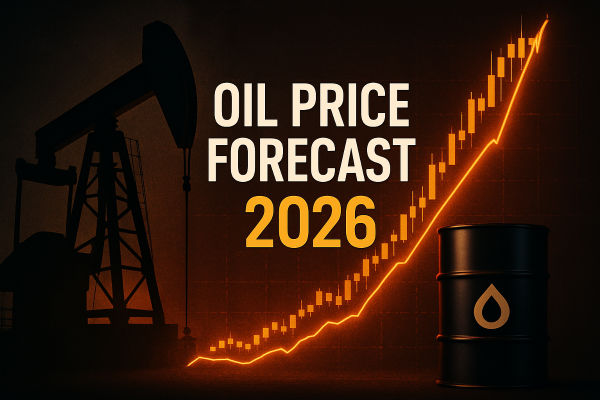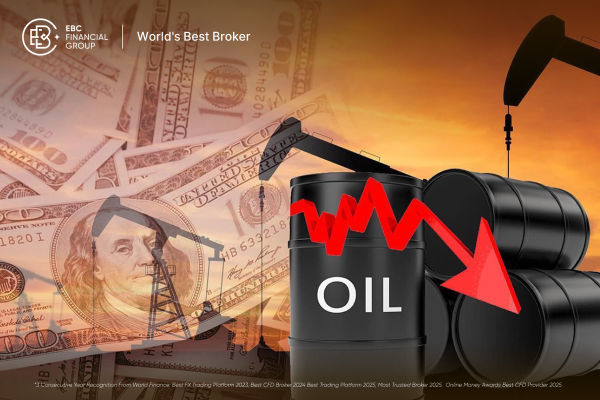West Texas Intermediate (WTI) prices experienced renewed weakness on Thursday after a surprising rise in US crude inventories triggered fears about fading domestic demand. The unexpected data, coupled with rising output from OPEC+ and mounting trade policy uncertainties, weighed heavily on oil markets, halting WTI's recent three-day rally.
US Crude Inventories Defy Expectations

The US Energy Information Administration (EIA) reported that crude oil inventories increased by 3.845 million barrels in the week ending 27 June. This was in sharp contrast to market expectations of a 2 million barrel drawdown, and reversed the previous week's decline of 5.836 million barrels. The larger-than-expected build suggests a weakening demand profile in the United States, the world's largest oil consumer.
This data triggered a wave of caution among energy traders, who viewed the inventory build-up as a sign that refiners are pulling back on production or that consumer fuel demand may be underperforming amid economic uncertainties.
WTI Reacts to Demand Worries
Following the inventory report, WTI crude oil prices slipped to around $66.00 per barrel during early European trading on Thursday. The decline put an end to a three-day winning streak and reinforced broader concerns that macroeconomic headwinds are eroding demand fundamentals.
The drop in WTI comes amid fears that domestic fuel consumption is stagnating, possibly due to weaker travel activity, industrial slowdown, or broader economic malaise. Market participants are particularly sensitive to signs of softening demand as summer driving season in the US—typically a period of robust consumption—progresses.
Trade Policy Risks Add to the Pressure
Further compounding bearish sentiment are growing concerns over a potential resumption of US tariffs. With the 90-day pause on high tariffs set to expire on 9 July, and no fresh agreements reached with key trade partners like the EU and Japan, traders remain on edge.
If new tariffs are imposed or previously suspended duties are reinstated, fuel demand could take a significant hit, particularly in transportation and manufacturing sectors. The uncertainty around US trade policy is adding a layer of volatility to global energy markets, where sentiment is already fragile.
OPEC+ Output Hike Fuels Oversupply Fears
In addition to domestic pressures, global supply-side developments are also weighing on WTI. According to a Reuters report, the OPEC+ alliance—comprising OPEC members and allies like Russia—is expected to raise output by 411.000 barrels per day at its upcoming meeting.
This increase would bring the total production hike for 2025 to 1.78 million barrels per day, or over 1.5% of global oil demand. While the market had anticipated some easing of output restrictions, the scale and timing of the increase raise questions about the group's strategy in the face of fragile demand and rising inventories.
Weak Chinese Data Undermines Import Demand Outlook
Adding to the gloomy sentiment, recent data out of China—the world's largest oil importer—showed slowing growth in its services sector. The Caixin Services PMI for June fell to 50.6. down from 51.1 in May, and missed forecasts of 51.0.
This marked the slowest pace of services growth in nine months, amid falling new orders and subdued export activity. For oil markets, the data signals potential weakness in China's oil demand, especially as domestic consumption and business activity appear to be losing momentum.
Conclusion
The decline in WTI prices highlights the precarious state of global oil markets as they grapple with rising supply, weakening demand, and heightened policy uncertainty. The unexpected surge in US crude inventories has rattled confidence in domestic consumption, while OPEC+'s planned production boost threatens to worsen the supply-demand imbalance.
Meanwhile, caution surrounding US trade policies and softening economic data from China are further eroding investor sentiment. Until clearer signals emerge regarding demand recovery and geopolitical stability, WTI crude is likely to remain under pressure, with traders increasingly reactive to short-term data and policy cues.
Disclaimer: This material is for general information purposes only and is not intended as (and should not be considered to be) financial, investment or other advice on which reliance should be placed. No opinion given in the material constitutes a recommendation by EBC or the author that any particular investment, security, transaction or investment strategy is suitable for any specific person.



























